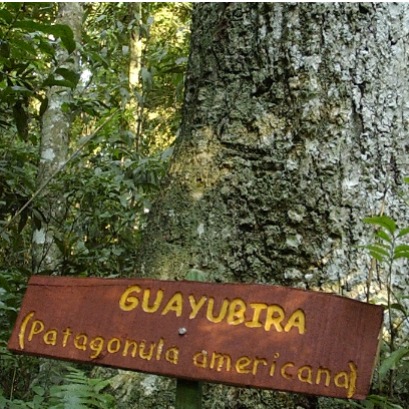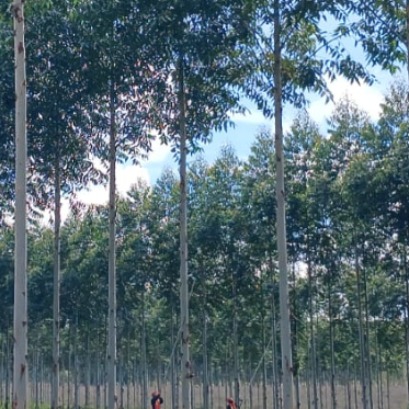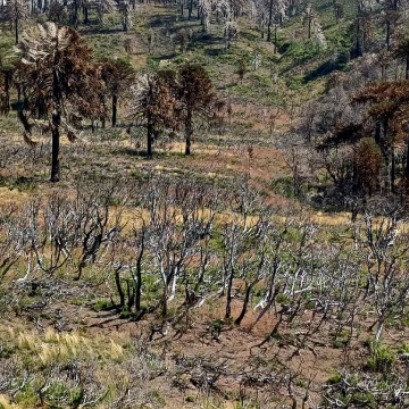
Know the Guayubira tree: one of the native timber species of the missionary jungle
With information from the Native Missions Species Manual (2024), developed in collaboration between the Faculty of Forest Sciences of the UNAM and the United States Forest Service (USFS) through the Project Update and Edition of the Wood Identification Manual of the Missionary Jungle, we share information from each digital tab that includes dendrological and anatomical characteristics. The manual was elaborated in the Wood, Dendrology and Dendrocronology Anatomy Laboratory (LAMDYD) of the Faculty of Forest Sciences in Eldorado, National University of Misiones.
Guayubira, a native species of great timber value, can reach up to 20 meters high. It has a dark and dense dura ideal for floors, furniture and sporting articles. Its wood, heavy and resistant. TECHNICAL CHARACTERISTICS OF THE GUAYUBIRANAN SCIENTIFIC TREE: American Cordia (L.) GOTTSCHLING J.S. Mill.Familia: Boraginacea Regionalenenening: ? Argentina: Guayubira ? Paraguay: Guajayvi Moroti ? Brazil: Guajuviradistribution Geographic Tree ? Wood color: Differentiated water and durable being the latter of dark brown color ? Growth rings: The growth rings are little demarcated ? Vaired: It is heavy to semi heavy wood, with a density of 0.80 gr/cm3. Generally in diameter less than 50 cm in adult state, it has important reinforcements in the base (image 6 and 7) ? Leaves: the leaves are alternate oblong or ovate of 3 to 8 cm long by 1 to 3 cm wide, the edges are undulating or sawn or sawn towards the roma apex and the base ahusada towards the short petiole. In diameter, the flowers are numerous and fragrant 5 mm long, the white corolla ? Fruit: The fruit is a 5 mm conical drup that divide the cortex into many rectangular and small plates. WOOD CHARACTERISTICS. soil and abroad lasts in natural state not treated approximately between 5 and 10 years. The duramen is not very resistant to the attack of fungi but resists the attack of insects not the sap.
IT MAY INTEREST YOU
 Missions | New illegal felling in the Piñalito Provincial Park in San Pedro reveals the silent expansion of deforestation in protected areas
Missions | New illegal felling in the Piñalito Provincial Park in San Pedro reveals the silent expansion of deforestation in protected areas
The advance of deforestation on protected areas was once again evident this week in the Piñalito Sur Provincial Park, in San Pedro, where the Ministry of Ecology and Renewable Natural Resources confirmed a new case of selective illegal logging. The event occurs in a context of growing concern about the fragility of the environmental control system in rural and border areas, where the scarcity of resources, personnel and logistics limits the capacity of surveillance against criminal organizations organized to steal native woods and market them on the black market in connivance with sawmill owners.
 Paraguay | The plantations became instruments of territorial development and the generation of decent employment, INFONA highlights.
Paraguay | The plantations became instruments of territorial development and the generation of decent employment, INFONA highlights.
Plantings in different phases, control of ants and weeds, pruning and thinning, mechanized harvest, technology applied to the field and complete integration of the production cycle were part of the CREA Forestal proposal in its Technical Update Conference – JAT Forestal 2025. The event took place on Friday, November 14, at Estancia Ñemity, located in San Juan Nepomuceno, Caazapá, where agricultural producers, technicians, contractors, students and companies in the sector met to observe the forestry business of the future in action.
 Specialists from 10 provinces develop forest landscape restoration strategies throughout the country
Specialists from 10 provinces develop forest landscape restoration strategies throughout the country
The program is developed by researchers from INTA, Conicet and the Argentine Wildlife Foundation.





















